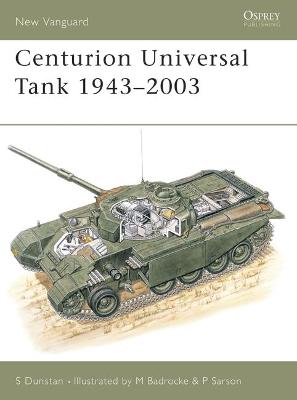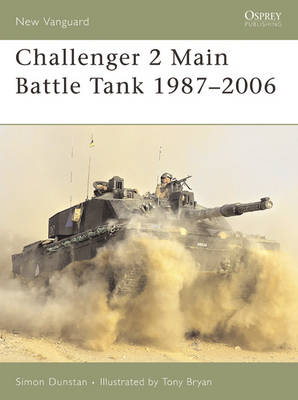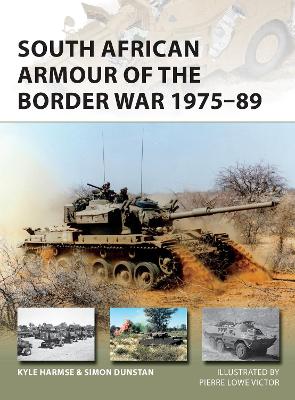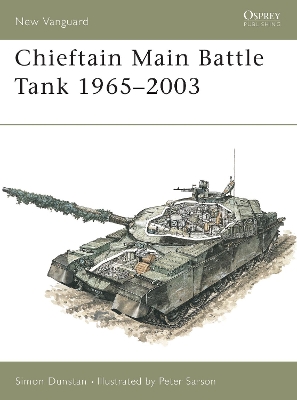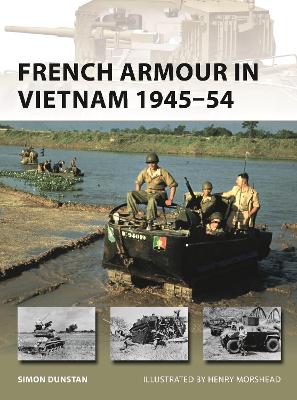New Vanguard
3 primary works • 5 total works
Book 68
From 1943 the British began the design of a tank that was similar to the German Panther tank. In 1945 the design emerged as the Centurion. It was last used in action by the British Army in 1991 during the Gulf War, having been first blooded by the British during the Korean War in 1950 and subsequently during the Suez Campaign of 1956. This work details all the variants of the Centurion used in conflicts as well as covering the specialist variants last used by the British in the Gulf War.
Book 112
The Challenger 2 Main Battle Tank is the current MBT of the British Army and represents the culmination of 80 years of tank design. Its development began in 1986. In 1987, the design was presented to the Ministry of Defence in response to a requirement to replace the Chieftain MBT that had been partially superseded by the Challenger 1 MBT. Production began in 1993, and the tank finally entered service in 2002. This tank recently appeared in Iraq, where it proved indispensable during the battle of Basra. This book covers the evolution of the Challenger 2, from its origins to its involement in the Middle East and Iraq.
Book 243
South African Armour of the Border War 1975-89
by Kyle Harmse and Simon Dunstan
Published 23 February 2017
The Border War saw the biggest armoured battles in Africa since World War II. Starting as a counter-insurgency operation by the South African Defence Force (SADF) against the South West Africa People's Organisation, South Africa became embroiled in the complex Angolan Civil War, where they came up against enemies well supplied with equipment and armoured vehicles from the Soviet Union.
With the aid of stunning illustrations and photographs, this study details the characteristics, capabilities and performance of the wide variety of armoured vehicles deployed by the SADF, from the Eland armoured car to the Ratel infantry combat vehicle and the Olifant tank. Designed for the unique conditions of the region, South Africa's armour was distinctive and innovative, and has influenced the design of counterinsurgency armoured vehicles around the world.
Frequently requested by Osprey readers, and written by two renowned experts on armoured vehicles, this will appeal to all those interested in modern armour and the Cold War proxy wars.
With the aid of stunning illustrations and photographs, this study details the characteristics, capabilities and performance of the wide variety of armoured vehicles deployed by the SADF, from the Eland armoured car to the Ratel infantry combat vehicle and the Olifant tank. Designed for the unique conditions of the region, South Africa's armour was distinctive and innovative, and has influenced the design of counterinsurgency armoured vehicles around the world.
Frequently requested by Osprey readers, and written by two renowned experts on armoured vehicles, this will appeal to all those interested in modern armour and the Cold War proxy wars.
The concept of the Main Battle Tank emerged from the Centurion Universal tank that was developed at the end of World War II. Development of its successor began as early as 1951. The Chieftain incorporated significant innovations including a reclining driver position and two-piece ammunition for greater survivability. The tank entered service in 1967 and was the heaviest armed, armoured MBT within the NATO alliance. The Chieftain saw combat during the Iran/Iraq War, with the Kuwaitis during the 1990 Iraqi invasion and with the British Army during the Gulf War of 1990/91 as special-purpose variants. This book explores the design, development and operation of one of the most influential vehicles used in modern warfare.
French experience with armour in Indo-China dated back to 1919, when it sent FT-17s to the colony, followed by a variety of armoured cars. After World War II, French troops were equipped with a motley collection of American and cast-off British equipment until the outbreak of war in Korea saw an increase in military aid. This included large numbers of the M24 Chaffee light tank, along with amphibious vehicles such as the M29C Weasel and LVT4 Buffalo, to conduct operations in coastal and inland areas that the Viet Minh had previously thought immune to attack. France's armour was a key part of the battle against the Viet Minh right up until the last stand at Dien Bien Phu.
